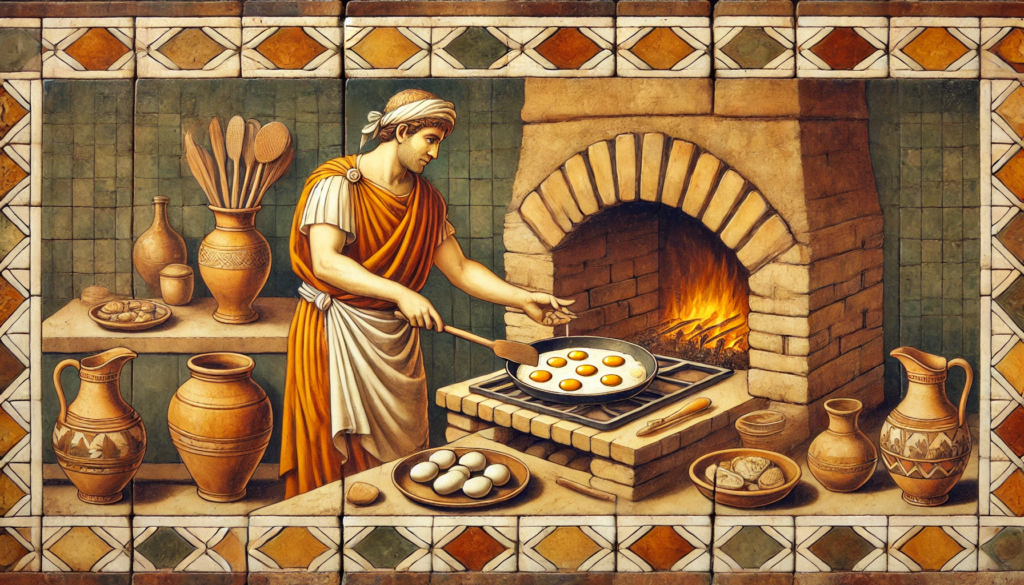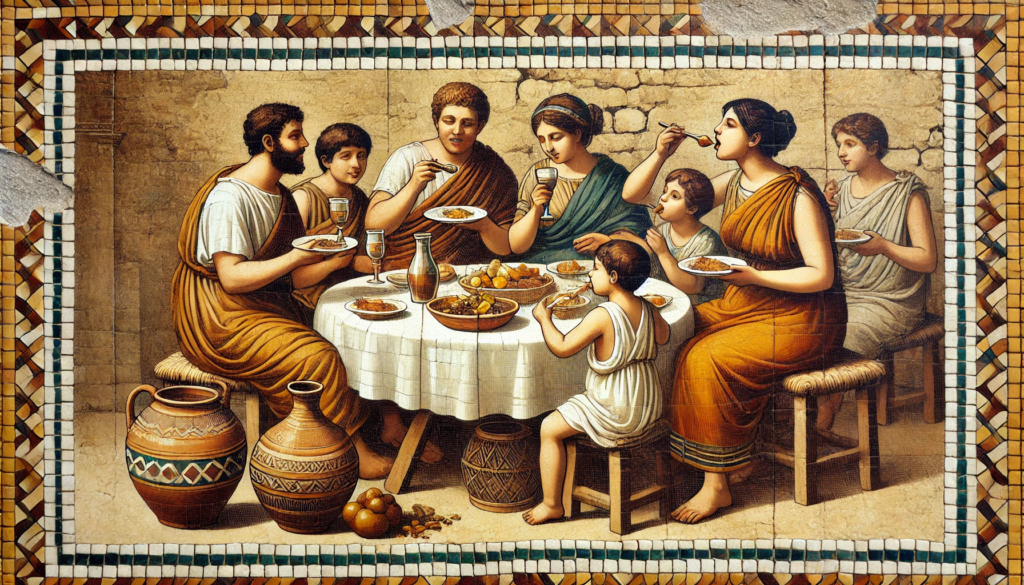When we think of the culinary world of Ancient Rome, images of lavish banquets and exotic dishes often come to mind.
But amidst the more extravagant fare, there were also simple, elegant recipes that captured the balance between sweet and savory—one such dish is Ova Spongia ex Lacte, or “Eggs Sponge with Milk.”
This Roman creation, which can be thought of as an ancient version of a sweet omelet, offers a glimpse into the daily life and tastes of Romans, blending humble ingredients in a way that feels both familiar and timeless.
Where It Comes From: The Apicius Cookbook
The recipe for Ova Spongia ex Lacte comes to us from Apicius De Re Coquinara, a collection of Roman recipes compiled during the late 4th or early 5th century CE.
Named after the famous Roman gourmand Marcus Gavius Apicius, this cookbook serves as one of the primary sources for understanding Roman culinary practices. The dishes within it are often simple but creative, showcasing the Romans’ skill in transforming basic ingredients into flavorful meals.
This particular dish, made from eggs, milk, olive oil, honey, and pepper, speaks to the Roman affinity for combining sweet and savory flavors—a hallmark of their cuisine. Though Apicius was likely aimed at wealthier Roman households, the ingredients in Ova Spongia ex Lacte were readily accessible throughout the empire, making it a dish that could have been enjoyed by many.
The Role of Ova Spongia ex Lacte in Roman Society
In Roman society, food was more than just sustenance—it was a reflection of wealth, status, and culture. While elite Romans often indulged in lavish banquets filled with rare and imported delicacies, simpler dishes like Ova Spongia ex Lacte were also cherished for their subtle complexity.

The combination of eggs and milk would have made this a rich, nutritious dish, but the addition of honey and pepper added layers of flavor that were distinctly Roman.
Romans had a well-documented love for blending sweet and savory, often using honey, vinegar, and spices to create complex flavor profiles. Whether served as a breakfast dish, a dessert, or a light snack, Ova Spongia ex Lacte would have been a comforting and versatile addition to the Roman table.
The dish may have been enjoyed in both private homes and inns along the Roman roads, where travelers could enjoy a simple yet satisfying meal.
The Roman Love for Sweet and Savory
The Roman palate was sophisticated, and their love for both sweet and savory flavors was evident in many of their dishes.
Honey was widely used in Roman cooking, not only in desserts but also in savory meals, often combined with pepper, vinegar, and other spices. This duality of flavors speaks to the Roman desire for balance and variety in their meals.

In Ova Spongia ex Lacte, we see this love for contrast. The sweetness of the honey is mellowed by the creaminess of the eggs and milk, while the pepper adds just enough warmth to create a satisfying, balanced bite.
It’s easy to see how this dish could be adapted for different occasions—perhaps more honey for a sweeter treat or extra pepper for a spicier version.
Recipe for Ova Spongia ex Lacte
If you’d like to bring a taste of ancient Rome into your kitchen, here’s a modern take on this timeless recipe:
If you’re enjoying my work, consider buying me a coffee :).

Ova Spongia Ex Lacte
Ingredients
- 4 large eggs
- 1/2 cup milk
- 2 tablespoons olive oil
- 2 tablespoons honey
- A pinch of freshly ground black pepper
Instructions
- In a bowl, whisk together the eggs and milk until fully combined, creating a smooth mixture.
- Heat the olive oil in a nonstick skillet over medium heat.
- Pour the egg mixture into the skillet and cook gently, stirring occasionally, until the eggs are just set and slightly fluffy—similar to a soufflé.
- Once cooked through, remove the pan from heat and drizzle the honey over the eggs.
- Sprinkle with freshly ground pepper for a delightful contrast of flavors.
- Serve immediately and enjoy a taste of ancient Roman cuisine!
Video
Notes
- Honey Variation: Adjust the amount of honey to your taste—add more for a sweeter dish or reduce it if you prefer a more savory balance.
- Pepper Heat: Use freshly ground black pepper for a more aromatic flavor. If you’re sensitive to spice, start with a smaller pinch and adjust to taste.
- Texture: For a fluffier texture, whisk the eggs vigorously to incorporate air into the mixture, or use a hand mixer for extra lift.